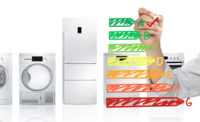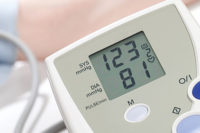Natural gas remains the dominant heat source in regions where electricity is at a high premium and natural-gas infrastructure has been established. Italy, for example, continues to prefer gas for its reliability and lower cost. In other countries, including Spain and the UK, combination gas and electric cooktops are popular because when the electricity is out, consumers can use the gas plates to cook. In U.S., gas-based cooktops are more common and popular amongst households compared to electricity-based cooktops, but we have started to see a shift in preference towards induction cooking.
On the other hand, steam ovens have been popular in professional environments, and now have started to gain visibility in the residential/household segment. Steam ovens reduce cooking time while maintaining the nutritional value of the food. Because of the faster cooking time, steam cooking also uses less energy. Recently we have seen many large cooking appliance companies adding a steam-cooking function into their traditional ovens and cookers/ranges. One can now witness an increase in level of interest of those who want to explore a steam cooking option at home.
Induction is a type of technology used in cookers/ranges and cooktops/hobs. Induction cooking uses electricity to produce a magnetic field that induces currents in atoms present in the cooking vessel. The moving atoms cause the vessel to heat and food is cooked. The electromagnetic elements of an induction cooker are normally housed under a glass ceramic cooktop. Induction cookers only work with magnetic materials such as steel and cast iron. Non-ferromagnetic materials, including glass, ceramic, copper, and aluminum do not work with induction-based cookers/cooktops/hobs.
The main benefits of induction cooking are faster cooking, precise programmability and ease of cleanup. Barriers to greater adoption have been price (for the large induction cookers), and the potential need for new cookware. Both these barriers had begun to fall in previous years as prices fell and manufacturers offered incentives (for example, a new set of compatible cookware) to purchase. However, during the recession, expensive technologies, including induction, did not sustain the growth of previous years unless government programs provided incentives to buy energy-efficient products. As economies stabilize, developed regions start to emerge from the downturn, sales of large induction cookers are projected to return to higher growth rates.
Large induction cookers are typically used as the primary cooking appliance and normally have 3, 4, or 5 cooking zones, or ‘rings.’ Large induction cookers are considered a major home appliance because they have long life spans (10 to 15 years) and are relatively expensive. Tabletop induction cookers are normally used as secondary cooking appliances. They are smaller and sometimes referred to as “portable” induction cookers. Tabletop induction cookers are not generally considered to be major home appliances and have a far shorter average lifespan (three to five years). They are more popular in Asia and in China in particular.
Relative to the other major home appliances, induction cooking is a new technology. In most markets, shipments of induction cookers have shown growth, though overall penetration remains low. Although established home appliances are increasingly using new technology and new design, induction cookers have not seen radical changes because it is relatively early in the product life cycle.
The market for ceramic-type induction cookers has gained further interest and momentum amongst consumers because of the various advantages it offers: better cooking performance, better safety, ease of cleaning, easy cooking with ‘no ring zone’ constraints, enhanced touch and display controls, and appearance.
One area of competition among large induction cooker makers is the power rating per cooking zone. This competition is similar to that of spin-speed in washing machines in that the power rating is close to reaching the practical limit that can be supplied to an average household. In some regions, Italy in particular, many large induction cookers already draw too much power for the typical household. In Japan there is a move back to gas cookers because they are considered to be less expensive in terms of utility bills.
Induction cooking is growing in popularity, with most large cooking appliance manufacturers also offering an induction cooktop option. As the economic situation becomes relatively stronger compared to the last five years, consumer knowledge of the benefits of induction based cooking grows, and with more push from appliance makers, the worldwide shipments for large induction cooking appliances, as per IHS Markit’s Home Appliance Intelligence Service, is expected to grow from 4.4 million units in 2016 to 7.3 million units in 2021, registering at a five-years CAGR of 10.7% during this period.
Japan, an early adopter of induction cooking, due to energy efficiency capability of this technology, had the largest volume share (26%) of the large induction cooker market in 2016. Nearly all of Western Europe has proven to be an important market for large induction cooktops, accounting for nearly 54% of the total market in 2016. France was the second biggest volume market followed by Germany. North America, trailing behind Germany, is expected to grow the fastest, compared with the top three markets, at five-years CAGR of 15.7%, shipping 1.2 million units in 2021.
The induction market in Europe in general is growing quickly, with the exception of mature countries including France, Spain and the UK. The exception is Italy, which tends toward gas appliances because of the limited electricity a household can draw at a time (around 3-3.2 KW).
The Netherlands and Benelux have traditionally been gas cooktop markets, but induction technology is gaining popularity there too as in the U.S. Gas has the benefit of an immediate flame, rather than waiting for a radiant heating element to warm up. Now with induction technology, heat is similarly fast and can compete with gas, hence Netherlands and Benelux are showing interest in the induction technology.
With respect to electronic components perspective, the large induction cookers, including ceramic types, have much more complex designs. The induction plates are typically controlled using a half-bridge configuration with two 600 V discrete IGBTs per plate. The microcontroller configuration varies depending on the number of plates, but typically a two-ring design seems to use either one or two microcontrollers. In four-plate designs, which are the most common, five microcontrollers are typically used: two to drive/control the plates, two for safety and one for the user interface. There seems to be a trend to reduce this to three microcontrollers, by eliminating one control and one safety product. The microcontrollers for the rings need to be of a fairly high specification because of the speed required, so they are usually 16-bit or even 32-bit products, while the safety and UI controllers may be 8-bit products. IHS Markit assumes that there will be increased use of 32-bit products from 2016 to 2021 within this product segment.
No considerable changes have been forecast to the semiconductor implementation in large induction hobs from 2016 to 2021, other than continuous improvement in the displays for cooking appliances. There has been some discussion about a possible trend in the large hobs from a half-bridge to single-ended configuration to reduce costs. Most multi-ring induction products are high-end and already have fairly sophisticated displays. However, there will almost certainly be a trend to increase the complexity of these displays over time, possibly by adding graphical options.
As touch technology develops, helped by the rapid development work in other industries such as smartphones, it is becoming more reliable and easier to adopt. Cooking appliance makers are starting to find that it makes financial sense to replace traditional mechanical controls and displays with touch technology because, even though the initial solution might still be more expensive, reliability and after-sale costs are reduced. The use of large graphical touch screens is also starting to be seen. It is still pretty rare today and confined to the very high-end of the market, but even this would have been inconceivable a decade ago, and a gradual trickle-down can probably be predicted. However, the high temperatures associated with cooking appliances make the use of graphical displays problematic.
Induction-based cooktops are becoming a common product of traditional cooking appliance suppliers, not only high-end companies. BSH Group, AB Electrolux, Whirlpool Corp., GE Appliances, Viking Corp., Sub-Zero/Wolf and now many more appliance makers are offering large induction cooktops in the worldwide market.



